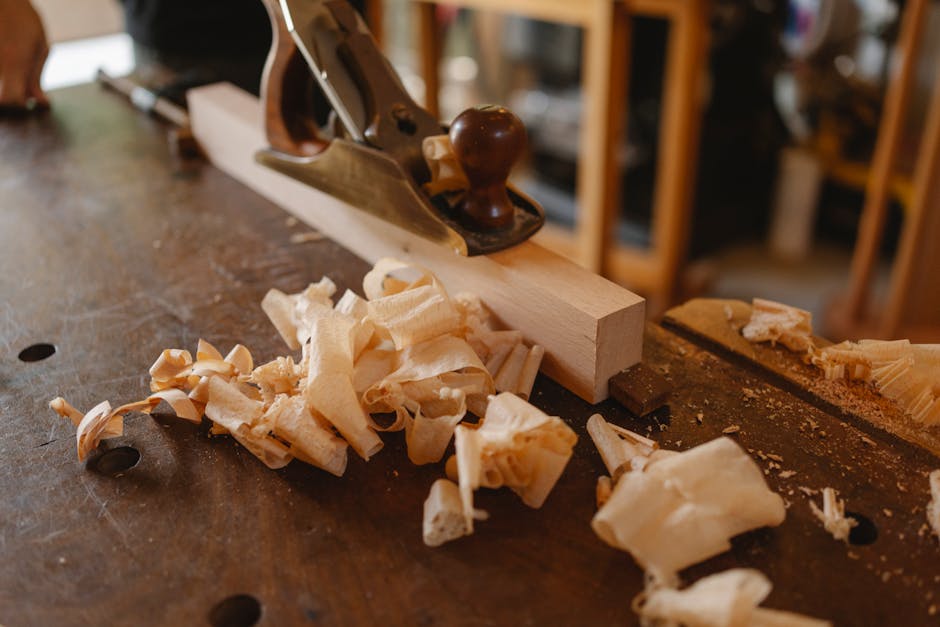
7 Tips for Choosing the Right Wood for Your Artisan Woodworking Project
Share
Embarking on an artisan woodworking project is akin to setting off on a creative adventure; the choice of wood not only defines the journey but also the final masterpiece. This guide will illuminate the path to selecting the perfect wood for your project.
1. Understand the Characteristics of Different Woods
Diving into the world of artisan woodworking begins with a fundamental appreciation for the unique characteristics that different woods bring to the table. Hardwoods, such as oak and maple, offer durability and a rich grain but require a skilled hand to shape. Softwoods like pine are more pliant, making them ideal for beginners, yet they possess a beauty that can complement any project. Exotic woods, although more costly and sometimes challenging to source, provide an unparalleled aesthetic that can elevate a piece from ordinary to extraordinary. Understanding these nuances is the foundation of selecting the perfect wood for your project.
2. Consider the Durability for Long-Term Wear
Durability is not just about withstanding the test of time; it’s about preserving the beauty and integrity of your work. Hardwoods like mahogany and teak are renowned for their resilience against wear and tear, making them ideal for items that will be heavily used or exposed to elements. Such durability ensures that the functional aesthetics of your artisan piece remain intact, allowing it to age gracefully and maintain its allure over the years. Factor in the envisioned use of your project to determine the importance of durability in your wood selection process.
3. Factor in the Wood’s Workability with Tools
The joy of artisan woodworking lies not only in the finished product but in the process of creation. The workability of wood, its response to cutting, shaping, and finishing, significantly affects this process. Woods such as basswood or cedar are known for their ease of manipulation, making them excellent choices for intricate carving or detailed work. Conversely, harder woods can offer a satisfying challenge and result in stunning, durable pieces but may require more advanced tools and techniques. Choosing a wood that matches your skill level and tool availability will ensure a more enjoyable and successful woodworking experience.
4. Pay Attention to the Grain and Color for Aesthetics
The aesthetic appeal of wood comes from its grain patterns and color, elements that can transform a simple piece into a work of art. The straight, uniform grain of woods like cherry and maple lends a subtle elegance, while the dramatic whorls in woods like walnut or burled maple can create eye-catching focal points. Color also plays a pivotal role in the design, influencing the warmth and mood of the finished piece. Incorporating the natural aesthetics of wood into your project’s design can elevate its visual impact and harmonic resonance within a space.
5. Assess the Availability and Cost in Your Area
The practical aspects of wood selection cannot be overlooked. Local availability and cost are significant factors that can influence your choice. Locally sourced woods often present a more sustainable option and can reduce costs, while imported or exotic woods, though appealing for their unique characteristics, may come with a higher price tag and longer lead times. Researching suppliers in your area and considering the balance between cost and the specific needs of your project will guide you toward making a smart, sustainable choice.
6. Factor in the Environmental Impact of Your Wood Choice
As artisans, we hold a responsibility not only to our craft but to the environment that provides our materials. The sustainability of wood sources, the impact of its harvest, and the preservation of biodiversity are considerations that affect the ethical footprint of our projects. Choosing woods certified by organizations such as the Forest Stewardship Council (FSC) ensures that your project supports sustainable forestry practices. Embracing reclaimed or recycled wood is another way to lessen environmental impact while adding history and character to your piece.
7. Seek Advice from Expert Artisan Woodworkers
Embarking on an artisan woodworking project is both a personal and communal journey. Seeking advice from experienced woodworkers can offer insights that guide your wood selection, inform your technique, and inspire your design. The collective wisdom of the artisan community is a rich resource that can elevate your work from craftsmanship to artistry. Engage with local artisans, join workshops, or participate in online forums to connect with and learn from the experts in your craft.

